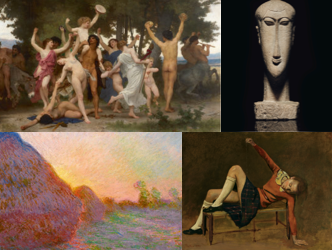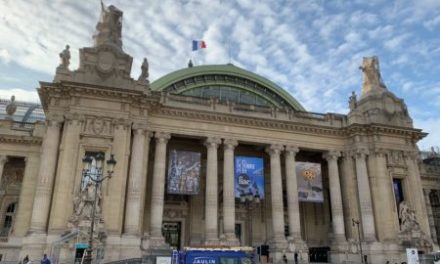The reigning king of Antwerp since the 17th century was an absolute genius when it came to painting, but also ambitious, dishonest and filthy rich.
We’re talking, of course, about Peter Paul Rubens (1577-1640). In his hometown, the studio where he worked is miraculously still standing. A visit there reveals how this exceptional character loved luxury, pomp and beautiful objects, but also how he worked his assistants by directing them from a mezzanine overlooking the studio’s painting room.
In the middle of the city, not far from the cathedral containing a sublime ‘Descent from the Cross’, also by Rubens, is a statue in his honour.
Further out, in a working-class neighbourhood of this port city, another king of painting works alone, imbued by its rich local history.
His name is Luc Tuymans (born 1958). He does not come across as the lying type. He probably has a lot of money judging by the asking prices in his galleries (over $1 million for his large paintings at Zwirner). His studio has an extreme simplicity about it, except for a skylight in the ceiling.
He loves stretching out on a battered sofa that brings to mind the objects so prized by the British painter Lucian Freud. He is clearly very ambitious and hard working and at the same time hard to approach.
Luc Tuymans is a surly character, but you get the feeling that deep down he has a soft heart. He seems to hide his anxiety. He smokes one cigarette after another and bites his nails. And he makes constant references to his wife, the Venezuelan painter Carla Arocha.
These days, Luc Tuymans is an international reference for painting.
From Doha to China, private collectors snap up his paintings. Until 22 October it’s Antwerp’s Zeno X gallery that is showing his work.
The record price paid at auction for one of his canvases, in 2013, was 2.07 million euros.
He has created a genre that flirts with abstraction and which uses and reproduces images that found on screens, TVs, telephones and in the press.
Tuymans’ world is populated with images that tend to take on meaning when they’re in series: the detail of a desk, a hand, portraits of people wearing glasses ‘because glasses alter the physiognomy’.
Each painting is born out of a precise observation that one cannot know unless he explains it. He prefers each spectator to find within this gigantic catalogue of painted images an evocation, an explanation that suits him or her. ‘The visitor doesn’t need all that. Not everyone has to see the same thing. One shouldn’t underestimate the spectator.’
But why this or that subject? Tuymans’ painting is mysterious, and just like in a film – a medium he once practiced – it’s the succession of a number of paintings that endows them with meaning.
For the first time, Tuymans is the subject of an exhibition in France at Lille’s LAM, museum. This small panorama of his oeuvre, is remarkable.
He is also showing the National Portrait Gallery in London from 6 October, taking uptakes up a digest of the summer exhibition of portraits of sitters wearing glasses at the MAS in Antwerp…
Before an impressive series of projects around the world including the Montreal Biennale in October . Plus he is curating a show about James Ensor at the Royal Academy beginning on 25th October in London.
And in 2018 a large exhibition at Musée des Beaux Arts in Antwerp on the subject of Baroque from Goya to Kienholz.
But Tuymans feels, first and foremost, a native of Antwerp. ‘The largest contingent of Belgian artists came from Antwerp. Brueghel the Elder, Rubens… Even Marcel Broodthaers exhibited here in 1978.’
He offers his personal reading of the history of art:
While Tuymans is impregnated with the culture of the past, he is also an expression of our times. The news from around the world is part of his primary creative matter. ‘We live in a time of uncertainty.’
He explains:
The painter admits that although he spends five months out of every year travelling for conferences, projects etc., the only thing that really excites him is painting on his own. ‘I paint one day a week. The rest of the time is mental preparation. I do not leave the studio.’ He paints on a canvas mounted on the wall, which is subsequently mounted on a frame with the help of his assistants.
In fact Luc Tuymans maintains a healthy distance from the art market: ‘At the beginning of my career I spent 15 years working as a nightclub bouncer to enable me to paint. The art market has become very dangerous for young artists. They are under enormous pressure. They can become victims of big galleries’ ‘branding’ if they take part. When I began exhibiting with David Zwirner they had just one assistant. Now they are 200.’
He ends, however, on an optimistic note about the young generation. ‘I visited the Berlin Biennale which was curated by DIS, who also have an online magazine. It was a stunning series of shows, very cohesive. It gave me hope.’
The exhibition at the National Portrait Gallery .




